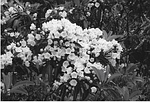Debunking Myths About Wildlife Gardens
1.Wildlife gardens attract pests, like snakes, ticks, and rodents
2.Classic sod lawns are prettier, while “messy yards” reduce property values
3.Native plants are unruly weeds, and spread uncontrollably
4.Pollinator gardens are dangerous because they attract stinging bees
A Maryland lawyer made these four claims in court on behalf of a homeowners association after a resident couple defied the HOA’s rules by planting a pesticide-free wild garden instead of installing flat sod/turf in their yard. A single neighbor complained, and boom, $100,000 in litigation. In this case, the gardeners won, and the state of Maryland ended up passing legislation last spring that requires HOAs to allow habitat gardens and prohibits turfgrass mandates.
We might ask, what is a pest anyway? What is a weed? If left alone, most “pests” are busy keeping each other under control. In her book, The Humane Gardener, (published by Princeton Architectural Press in 2017, with a starred review from the Library Journal) Nancy Lawson points out that “dragonflies and bats eat mosquitoes; opossums and birds eat ticks; snakes prey on mice; and wasps and spiders eat other insects.” When we disrupt deeply interconnected communities, inevitably a population explosion brings one or another of these species to our attention in some unpleasant way. As part of an ecological community, indigenous plants have evolved to support the delicate balance of predators-and-prey and to flourish without watering or chemical protection. Call them weeds if you want, many are extremely attractive looking.
Lawson has been able to manipulate deer behavior on her land by planting food they like, including pokeweed, sumac, dogwood, goldenrod, elderberry, jewelweed, violets, asters and native grasses along their habitual pathways, drawing them away from other plants she wants them to avoid. She also uses unappetizing varieties near vulnerable flowers to deflect their attention, although she admits, “There’s no such thing as deer-proof plants."
Nurseries and big-box stores want to satisfy their customers too; if we demand native plants, they will figure out how to supply them. If demand goes up for shad bush, mountain laurel and redbud, for may apples, bracken and maidenhair ferns, for native dogwood, rose of sharon and witch hazel, pussy willows and clethra, it helps to start a virtuous circle (as opposed to a vicious one) in which gardeners need fewer chemicals to grow them, more beneficial bugs, birds and animals can multiply. This, in turn, will tamp down explosions among disrupted insect species.
Now if I could only get some advice about distracting that pesky woodchuck who lives under my driveway and darts out all summer long to strip my variegated Solomon’s Seal down to the nubs, I would be so grateful!!! But I will not kill him (or her); somehow, we’ll find a way to live together.
Westchester Native Plant Center (at Westchester Community College)
2022 Spring Landscape Conference
The New Green Yard: Climate-wise Practices and Solutions
March 14, 2022;
Time: 8:30 a.m. to 1:00 p.m
Suny Westchester


